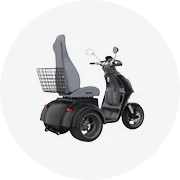About products and suppliers
Alibaba.com có một bộ sưu tập toàn diện về chất lượng cao, độ bền và tình trạng mới trục ổ đĩa toyota vương miện. sản phẩm và nguồn cung cấp cho khách hàng để lấy với giá cả phải chăng nhất. Toàn bộ bộ sưu tập các sản phẩm được cung cấp trên trang web là các sản phẩm đã qua sử dụng trong tình trạng nguyên sơ và việc mua chúng hoàn toàn xứng đáng từng xu. Cho dù ai đó muốn mua xe cộ, đồ điện tử và thậm chí cả đồ uống cứng như rượu whisky, sâm panh, người ta có thể tìm thấy tất cả các loại sản phẩm trên trang web với các giao dịch cạnh tranh. Những trục ổ đĩa toyota vương miện này. nguồn cung cấp và sản phẩm được kiểm tra cẩn thận để có chất lượng hoàn hảo và tất cả đều ở trong điều kiện hoạt động hoàn hảo.
Bộ sưu tập đa dạng của loại cao cấp trục ổ đĩa toyota vương miện. các sản phẩm có sẵn trên trang web được nhập khẩu từ nhiều nơi khác nhau trên toàn cầu và được kiểm tra bởi các kỹ thuật viên chuyên nghiệp. Những sản phẩm này bao gồm các sản phẩm đã qua sử dụng hoặc đồ cũ được bán với giá tiết kiệm. Người ta cũng có thể lấy các thiết bị, sản phẩm và phương tiện cao cấp, chọn từ nhiều loại sản phẩm có thể truy cập trên trang web. Nhiều sản phẩm trong số này đi kèm với sự đảm bảo của nhà cung cấp và thương mại và có thể tuân theo các điều khoản và điều kiện của người bán.
Tại Alibaba.com, các danh mục riêng biệt của trục ổ đĩa toyota vương miện. vật tư và sản phẩm được kiểm tra cẩn thận để đảm bảo phần cứng bên trong trong trường hợp thiết bị điện tử và xe ở tình trạng tốt nhất. Trong trường hợp đồ uống như rượu whisky lưu niệm và đồ uống khác, chất lượng và thời hạn sử dụng của sản phẩm được kiểm tra kỹ lưỡng. Đối với ô tô, chất lượng động cơ, bánh răng an toàn và điều kiện lái xe được kiểm tra nghiêm ngặt để tránh sai sót. Người ta cũng có thể chọn những chiếc đồng hồ sang trọng trong tình trạng tốt nhất và mang lại giá trị tốt nhất cho đồng tiền.
Xem nhiều đồng hồ trục ổ đĩa toyota vương miện. phạm vi trên Alibaba.com và mua những sản phẩm này trong phạm vi ngân sách và khả năng chi trả. Những sản phẩm này dành cho mục đích sử dụng dành cho giới tính, và người ta cũng có thể tìm thấy các sản phẩm cho đồ trang trí nội thất, trẻ em và nhiều sản phẩm khác. Sản phẩm cũng được làm sạch, tráng và bảo dưỡng trước khi bán.





















